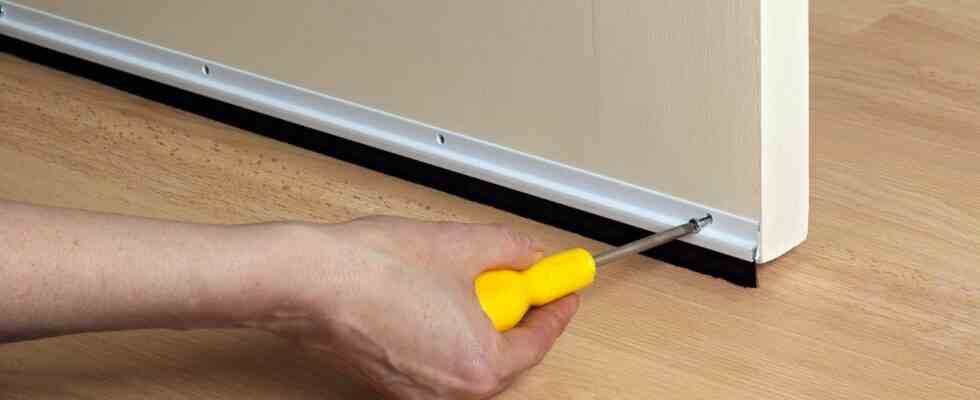seal door
These options exist to stop drafts and reduce the need for heating
If doors are not tight, drafts penetrate through cracks and gaps. The result: the heating requirement increases.
© Gary Ombler / Getty Images
If doors are not sealed properly, cold air penetrates through gaps and cracks. This draft is not only uncomfortable, but can also be expensive. The demand for heating is increasing and so are the costs. What can you do about it? Tips and tricks for sealing doors.
Leaky doors are annoying. Drafts get in, the rooms cool down and the need for heating increases. However, there are various ways of sealing doors and preventing drafts from entering through gaps and cracks. Here’s how to do it quickly and easily.
Leaky doors: That’s why they’re a problem
Sealed doors not only keep out cool drafts, but also dust and dirt. Leaky specimens, however, do not. In old buildings in particular, there are numerous gaps and cracks on doors, so that they are not tight. Not only front doors are affected, but also interior doors. The former should be given priority when repairing, because colder air can penetrate from the outside. Drafts cool down the heated dwelling. Anyone who shivers turns up the heating as a result. This, in turn, increases heating costs. In addition, noise penetrates better through leaky doors.
Sealing the door: what are the options?
You can recognize leaking doors by cool drafts. You can detect small leaks by standing in front of the closed door with a candle or a lighter. If the flame flickers, there are leaks. Once the weak points have been identified, you can improve the affected doors. Various options are available to you for this.
Stop drafts under the door: door sealing rails with a brush
Columns located under the door leave with door sealing rails close. There are different models for uneven floors such as tiles, but also for smooth floors such as parquet or laminate. These seals are equipped with floor brushes. These are fine brushes that can keep the cold out for the most part. The structure glides smoothly over the floor and is therefore a safe solution. You can choose between models for writing or sticking. This type of door seal is only available for the bottom edges, if you want to touch up doors all around, choose one of the following methods.
Seal doors all around with rubber seals
Small crevices and cracks can be removed rubber seals remedy. They can reduce heat loss and provide good soundproofing. As a rule, they are attached to the door rabbet. In some cases, the practical seals can be fitted around the door. The disadvantage of rubber seals is that they can wear out more quickly. They can be attached precisely and reliably stop drafts.
Fix wide gaps with foam gaskets
foam seals are attached to the door rabbet. They work like rubber gaskets, just made of a different material and provide more mass to fill larger gaps. You can choose between different colors to match the seals to the color of the door.
Textile draft excluder
Similar to door seal rails also work textile draft excluders. Unlike the rails, however, they are not attached to the door, but simply placed in front of the gap to prevent cool air from entering.
You might also be interested in:
This article contains so-called affiliate links. There is more information here.



